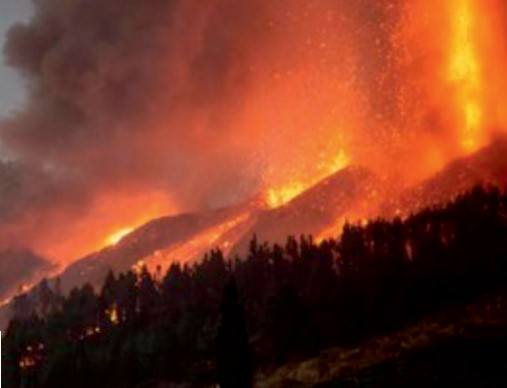September 2021 Newsletter


Welcome to our September 2021 newsletter, which has, as its main theme, Integrated Ground Modelling in the offshore wind farm sector. As we approach the major climate change conference COP26 to be held in Glasgow in October this year, increasing focus is being applied to the Energy Transition, decarbonisation, and meeting Net Zero targets.
The energy supply situation has been exacerbated by the increasing demands on electricity generation to meet ever-growing domestic consumption. At the same time, existing power generation facilities are being decommissioned, especially in attempts to remove polluting coaland gas- fired power stations, and the nuclear sector is plagued by continuing delays and ongoing hikes in costs. This situation has been compounded by below-expectations power generation from offshore wind farms as the UK has been beset by stable high-pressure zones and very low wind speeds. There have also been problems with national grid infrastructure, and international geopolitical stresses. For example, Russia limiting gas supplies through its Gazprom pipeline into Europe has put extra pressure on European power generation capacity. These compounded issues have led to eye-watering hikes in the price of electricity from ~£56/MWh to more than £4,500/ MWh, with Irish, French, and Dutch interconnectors into the UK being switched off to protect their domestic supplies.
These issues make development of more renewable energy capacity more urgent. Innovations in integrated ground modelling, such as those pioneered by RIL in many offshore wind farm developments around the world, help to reduce costs of ground investigations significantly. Read on to find out more about these topics and benefit from our expert advice about ground investigations and integrated ground model development for marine renewable energy applications.
Offshore Wind update
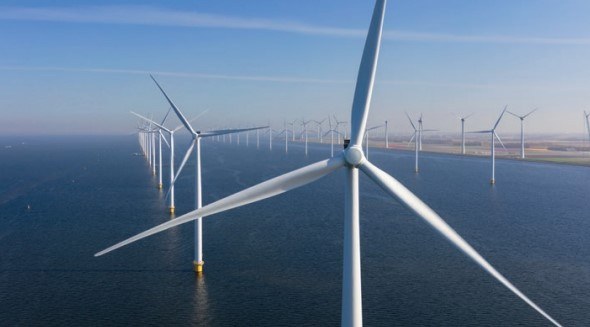
Global interest in both the reduction of CO₂ emissions and an increase in demand for renewable energy is driving the growth of offshore wind as a source of clean energy. Europe is leading the way in the development and installation of offshore wind farms, with 25 GW capacity spread across 116 wind farms in 12 different countries. This figure is expected to grow rapidly, and as such, the European target for 2050 is to have an installed capacity of 300 GW. At present, 40% of this capacity is installed in the United Kingdom; however, many other countries, in the Mediterranean to the Baltic, have significant plans to capitalise on the offshore wind energy boom, with many setting ambitious installation targets by 2030.
Outside Europe, many nations are following suit to help bolster their clean energy agendas. Parts of North and South America and Asia are already in the process of planning and installing offshore wind energy, such as offshore Massachusetts, USA. Elsewhere, China has recently overtaken the United Kingdom as the largest operator of installed offshore wind, while Japan, Taiwan, South Korea, and Vietnam have each begun planning and implementing strategies to develop their offshore wind power.
Since 2009, Reynolds International Ltd has been actively working on offshore wind energy projects and has contributed to over 60 ground models.
Our experience ranges from North America, in UK and European waters, and in Asia. We have helped numerous developers from inception to completion of their offshore wind farms. Our innovative understanding of the subsurface through the integration of seismic and geotechnical data, is of critical importance when it comes to selecting optimum wind turbine locations. The correct placement of turbines is crucial; if they are inserted into sediments with inadequate load capacities, the risk of failure greatly increases. Additionally, we help our clients gain new insights into the physical properties and behaviour of the seabed and very shallow subsurface, key in planning and designing inter-array and export cable installation and corridor routes.
We are, therefore, in a prime position to assist with and contribute to offshore wind ground model development globally.
Seismic sources, their applications, and relative resolutions
Two key considerations exist when imaging the subsurface: the target depth of penetration and resolution. The types and frequencies of signal source(s) can influence both parameters.
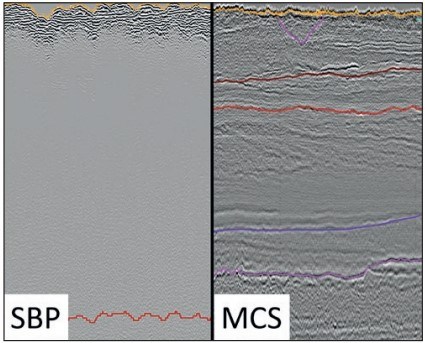
Reflection seismic imaging helps visualise the subsurface, with widespread usage in the offshore renewable energy sector. Successful subsurface imaging contributes to the creation of detailed 3D Ground Models, delineating geological interfaces and highlighting possible buried hazards. This greatly constrains uncertainties and helps refine offshore wind farm and export cable corridor design and layout. Understanding the types of seismic data and the sources used is therefore critical.
2D seismic reflection data types include sub-bottom profiler (SBP), single-channel seismic (SCS), and multi-channel seismic (MCS). SBPs provide detailed information on subsurface properties to ~10 m depth, making them useful for cable burial surveys. SCS is typically high resolution that images the top 50-60 m below seabed. MCS is characterised by multiple receivers recording each shot to generate signals that can penetrate much deeper and enable a wide range of data processing methods. 3D seismic surveys, though more expensive to acquire, provide more comprehensive ground coverage and permit better differentiation and geospatial mapping of 3D subsurface features.
Frequency is a key source parameter. Higher frequency sources (CHIRP and boomers) provide highest resolution images but suffer from high attenuation of the signal with depth, resulting in shallow penetration. Sparkers and air gun sources, with their greater energy outputs and lower frequency bandwidth, enable deeper penetration but at the cost of resolution.
RIL possesses extensive in-house expertise in designing, handling, and interpreting the various kinds of seismic surveys and data types and is the leading geophysics consultancy in offshore renewable energy.
Preliminary ground model to an integrated Ground Model
Creation of a preliminary 3D geological ground model is the first step in understanding the geological and geophysical characteristics of any offshore wind farm (OWF). The ground model is created from numerous geophysical inputs; these can include Multibeam Echo Sounder (MBES), Side-scan sonar (SSS), Magnetometer (MAG), Subbottom profiler (SBP), and Single/Multi-channel ultrahigh resolution seismic (UHR). The geophysical data are used as inputs to produce a working digital data set from which maps of seabed conditions, geological formation extents, and geohazards, can be created and uncertainties estimated. For a ground model to be truly representative of the subsurface properties, it is necessary to constrain the geophysical interpretation with intrusive geological and geotechnical sampling.
An Integrated Ground Model (IGM) is produced by combining several multi-disciplinary datasets spanning geophysics, geology, and geotechnical data. To correlate geotechnical and legacy seismic data, there may also be a need to reprocess the seismic data with an updated modern processing workflow and velocity model for greater accuracy. The geotechnical data that can be incorporated into an IGM include a suite of tests such as Cone Penetration Tests (CPTs), deep sampling Boreholes (BHs), and Vibrocores (VCs), with a selection of the samples taken from the subsurface being sent to a geotechnical laboratory for advanced testing. Distinct soil units can be defined from the analysis of the lab testing results and subsequently used to update the geophysical ground model. The integration of the geotechnical log data will inevitably require refinement of the geophysical interpretation and vice versa from the preliminary ground model with the aim to reduce the uncertainty in the generated maps.
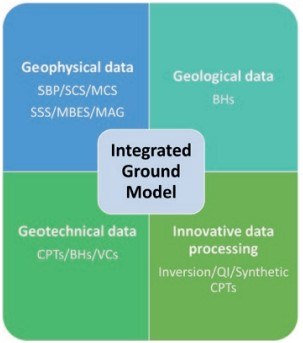
Further to this, more innovative methods can be used to enhance the understanding of the ground conditions in the survey area. These can include generation of synthetic CPTs, the application of seismic Quantitative Interpretation methods (QI), and inversion of the seismic data, to give greater confidence in the geological interpretation away from the intrusive investigation locations. RIL has led and pioneered the development of Integrated 3D geological Ground Models to help reduce the risks involved in planning an offshore wind farm and cable corridor.
Strategy of phasing Ground Investigations
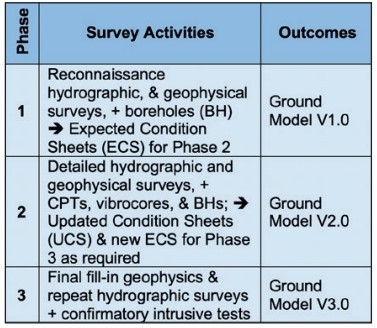
Critical to the success of the development of a new wind farm is having an appropriate ground investigation strategy: hydrographic, geophysical, and intrusive. This helps ensure that the right data are acquired to the right technical specifications and survey designs, and at the times most appropriate to each stage of project development.
An initial reconnaissance geophysical and bathymetric survey should be undertaken to provide details of water depths and seabed characteristics and to gain a broad appreciation of the heterogeneity of the sub-surface geology. This needs to be ground-truthed by boreholes from which the specific sub-seabed sediment and rock types and their characteristics can be determined. This represents a Phase 1 investigation and the development of an initial 3D geological ground model. It is important that the geophysical survey is designed with the necessary ground coverage to provide both in-lines and cross-lines to ensure good quality control at the interpretation stages. It is also best to ensure that the intrusive tests are co-located on seismic profiles for optimal cross-correlation.
As the wind farm turbine layout is developed, based on optimal wind conditions and the initial ground model, a Phase 2 ground investigation is advised to provide improved spatial resolution and imaging of features identified in the first phase. Locations of additional intrusive tests (boreholes, Cone Penetrometer Tests, vibrocores, etc.) and derived geotechnical sampling with laboratory testing should be based on targeting specific sub-seabed areas of interest. This permits the development of a Phase 2 Ground Model that provides better spatial resolution to the information contained within it. Further investigations can be designed around very particular zones within a wind farm development area, perhaps to investigate possible shallow geohazards and areas of uncertainty in the Ground Model. A final third phase of investigation with fill-in hydrographic and geophysical surveys coupled with more targeted intrusive testing can be undertaken. These additional data sets are used to further refine and enhance the earlier Ground Model into a final Phase 3 version.
Contact RIL to help develop your Ground Investigation strategy; after all, we are the market leaders in this field.
Benefits of 3D ground model visualisation
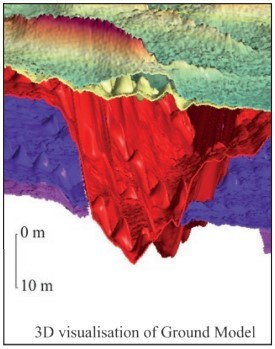
At RIL, we have pioneered the application of oil-industry standard interpretation software over many years to extract the full value of standard, high-resolution, single- and multichannel seismic reflection data. We have developed a highly specialised, modular workflow (imagis™) through working on some of the most challenging offshore wind farm and marine infrastructure projects.
Our imagis™ workflow has been expanded using specialised 3D geological modelling software. We can create fully integrated ground models utilising all available hydrographic, geophysical, geological, and geotechnical information. These models provide visualisations to guide our interpretations and help to develop our understanding of the subsurface complexities. We can therefore provide stakeholders with a better understanding of the risks and challenges associated with their infrastructure projects through the use of these models.
Problems associated with offshore cables
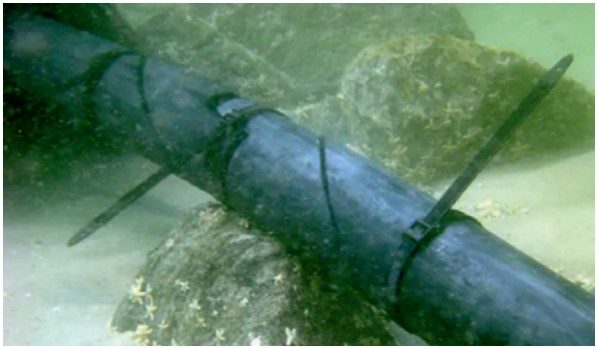
A recent article in The Guardian newspaper stated, “A renewables firm, which is behind plans to build one of the world’s largest offshore windfarms off the coast of the UK, told investors it might need to spend up to £350m over the next two years to repair subsea cables”.
These costs are related to urgent repairs needed as the subsea cables are being damaged by seafloor processes. The long-term sustainability of these cables over the 25+ year lifespan of an offshore windfarm is a significant issue. Therefore, the production of high-resolution and detailed export cable corridor ground models coupled with an understanding of marine processes at the seabed are essential. RIL can recommend appropriate ground investigation strategies to achieve high-quality information in the depth of interest (e.g., 10 m below seabed), which could help optimise cable design and installation, and mitigate against unforeseen costly repair work.
Dramatic volcanic eruption in Canary Islands
A volcano erupted violently on Sunday 19th September 2021 along a fissure in Cumbre Vieja on La Palma, the most north-western island in the Canaries archipelago. This follows thousands of shallow earthquakes through the previous week heralding the imminence of the eruption. Thousands of local residents and hundreds of tourists have been evacuated, and many buildings and roads have been engulfed by slow moving lava. Thankfully, there have been no injuries or fatalities. This volcano is anticipated to continue this phase of activity for weeks more, pumping huge amounts of gas into the atmosphere. This volcano’s last major eruption was in 1971 but there was a small submarine eruption about 10 years ago. It is one of the most active volcanoes in the Canary Islands.
